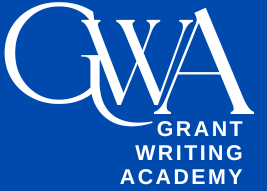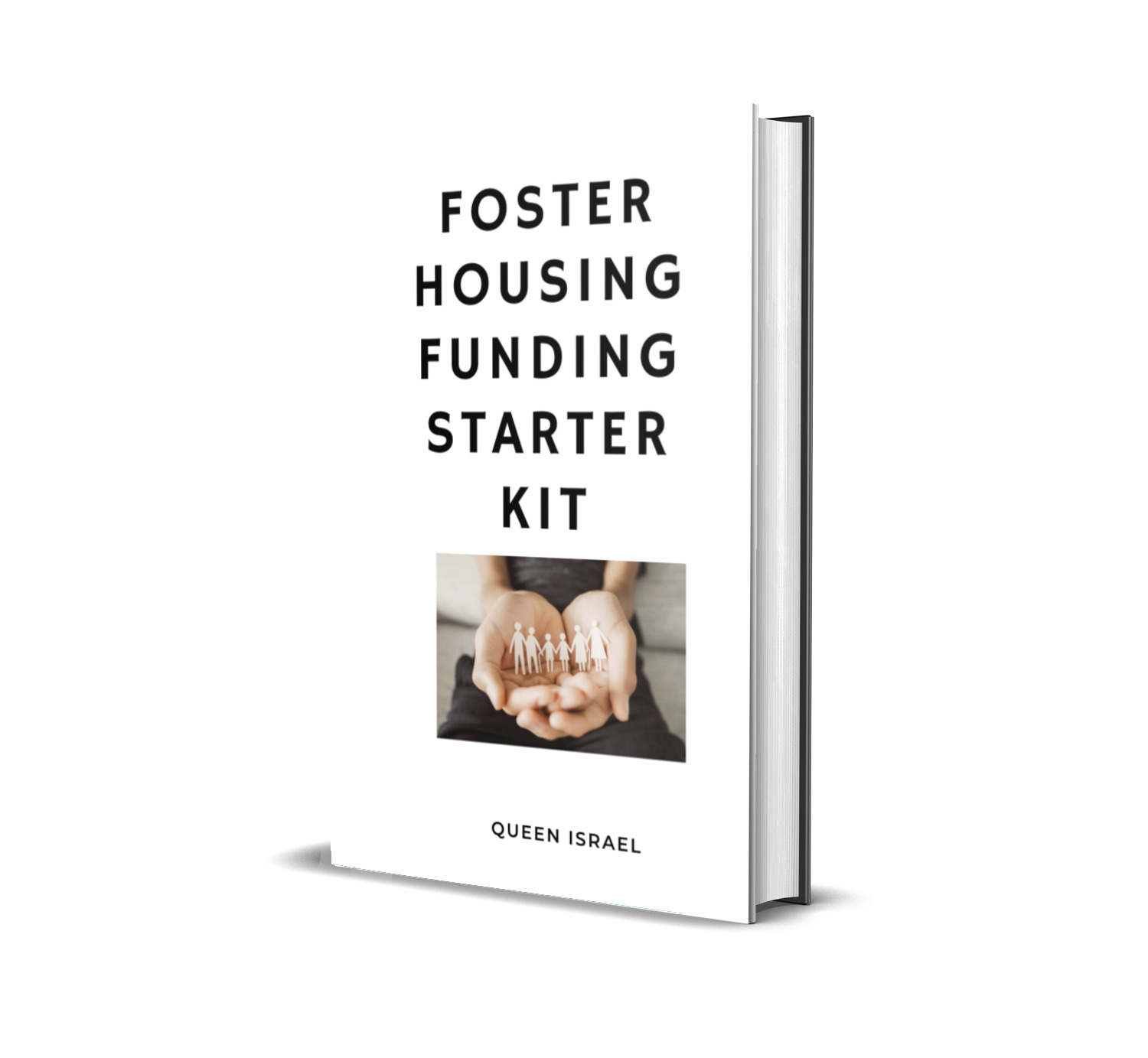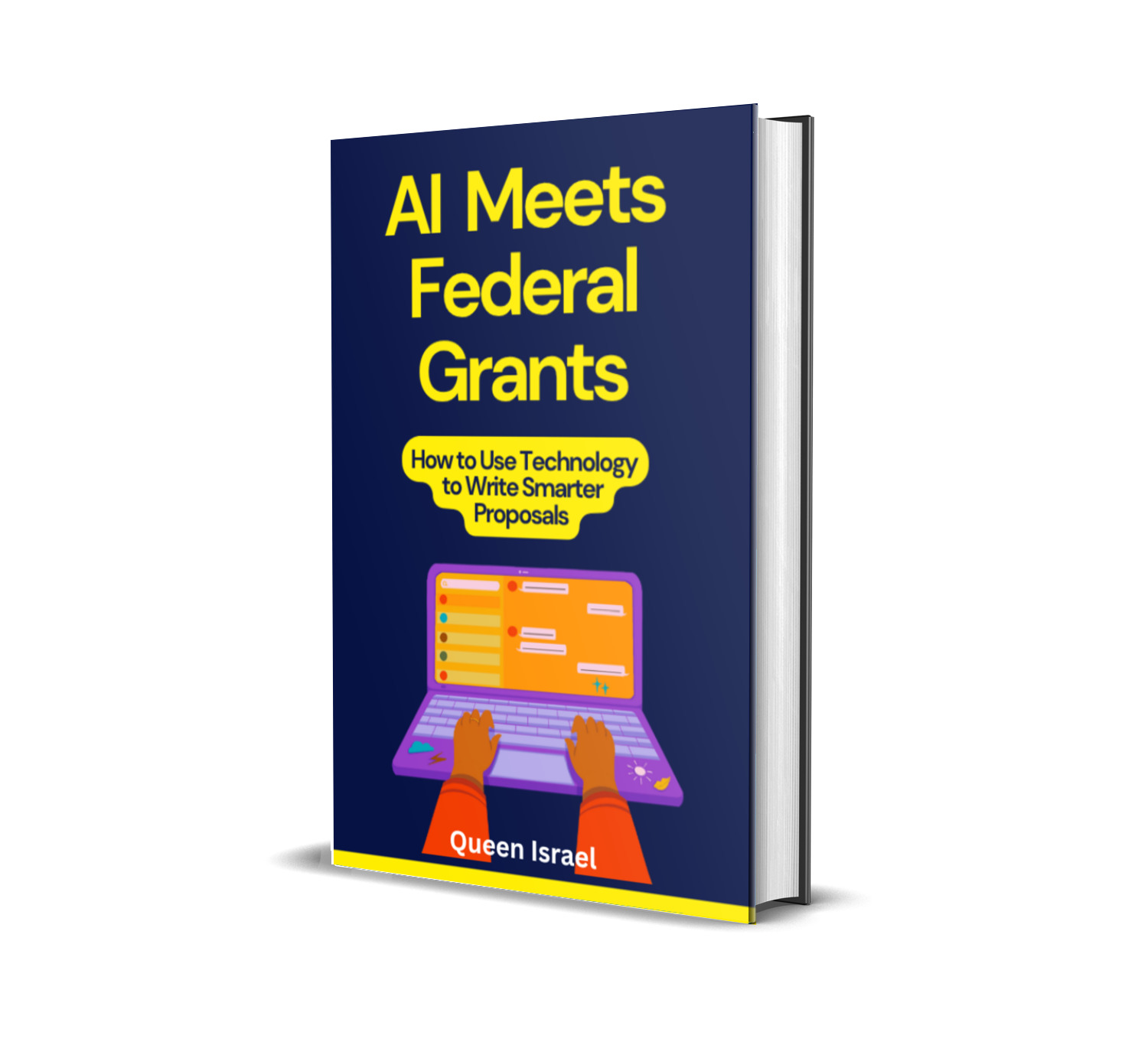If you run a nonprofit organization focused on mental health, you know that securing funding is one of the most critical aspects of keeping your mission alive. Fortunately, government grants for mental health nonprofits provide an excellent source of funding to support these efforts.
Whether you’re helping veterans recover from PTSD, offering counseling services for those struggling with anxiety and depression, or working on prevention and education, mental health nonprofits play a crucial role in society.
In this guide, we’ll break down everything you need to know about government grants, how to find them, and tips for securing these valuable funds.
Understanding Government Grants for Mental Health Nonprofits
What Are Government Grants?
Government grants are financial awards provided by federal, state, or local agencies to support specific projects or services. Unlike loans, these grants do not need to be repaid, making them a highly sought-after funding source for nonprofits.
For mental health nonprofits, government grants can offer the financial backing needed to expand services, reach underserved populations, or create innovative programs to address the growing mental health crisis.
Why Government Grants Matter
Mental health issues are on the rise, with the World Health Organization (WHO) reporting that depression is now the leading cause of disability worldwide. In the United States alone, the National Institute of Mental Health (NIMH) states that nearly 1 in 5 adults experience mental illness each year. Government grants help bridge the funding gap, enabling nonprofits to provide essential services, conduct research, and implement community-based programs that can make a significant impact on individuals’ lives.
Where to Find Government Grants for Mental Health Nonprofits
Navigating the landscape of government grants can be overwhelming, but knowing where to look is the first step toward securing funding. Here are some of the best sources to find government grants for mental health nonprofits:
1. Grants.gov
Grants.gov is the primary portal for finding and applying for federal grants. It offers an extensive database of available funding opportunities from federal agencies like the Department of Health and Human Services (HHS) and SAMHSA. You can search for specific mental health grants by filtering through various categories such as substance abuse, youth mental health, or mental health services for veterans.
- Pro Tip: Create an account and set up email alerts to stay updated on new funding opportunities relevant to mental health. Visit Grants.gov to get started.
2. SAMHSA Grants
The Substance Abuse and Mental Health Services Administration (SAMHSA) is one of the largest federal agencies focused on mental health and substance use disorders. SAMHSA provides numerous grants for mental health programs, including funding for crisis intervention teams, recovery support, and programs addressing the opioid crisis.
- Example Grant: State Mental Health Block Grant (SMHBG) – These grants help states deliver mental health services to those in need, especially individuals who are uninsured or underinsured. Learn more at SAMHSA Grants.
3. The National Institutes of Health (NIH)
The National Institutes of Health (NIH) offers a wealth of funding opportunities for mental health research and community mental health projects. NIH grants are often geared toward innovative, evidence-based research that advances mental health treatment, prevention, and education.
- Example Grant: Research on Mental Health and Substance Use – This grant focuses on understanding mental health disorders such as depression, schizophrenia, and PTSD. Explore funding options at NIH Grants.
4. State and Local Government Grants
Many state and local governments also offer funding opportunities tailored to the specific needs of their communities. Local health departments or state health agencies may provide grants for initiatives like implementing mental health programs in schools or funding community health centers.
- Pro Tip: Reach out to your state or local health department to inquire about available funding and eligibility requirements. Websites for state health departments often list grant opportunities.
5. The Administration for Children and Families (ACF)
The Administration for Children and Families (ACF) provides grants that support mental health services, particularly for children and families. These grants can help nonprofits develop programs that address the unique mental health challenges faced by younger populations.
- Explore ACF Grants: Visit the ACF Grants page to find opportunities related to child and family mental health.
6. The Department of Veterans Affairs (VA) Grants
For nonprofits that support veterans, the Department of Veterans Affairs (VA) offers grants specifically aimed at improving the mental health services available to veterans. These grants can fund programs addressing PTSD, depression, and other mental health issues prevalent among veteran populations.
- VA Grants Information: Check out the VA Grants page for more details on available funding.
Types of Government Grants for Mental Health Nonprofits
Government grants come in various forms, each designed to support different aspects of mental health work. Understanding the types of grants available can help you identify which ones align best with your organization’s goals.
1. Project Grants
Project grants fund specific projects within your mental health nonprofit. Whether you’re starting a new program or expanding an existing one, project grants are an excellent option. For example, SAMHSA’s Community Mental Health Services Block Grant supports projects that provide treatment and prevention services for people with serious mental health conditions.
- Example: A grant to develop a mobile mental health clinic serving rural areas.
2. Research Grants
If your nonprofit is conducting research related to mental health, research grants from agencies like NIH or SAMHSA can provide essential financial support. These grants fund studies that advance the understanding of mental health conditions and the effectiveness of treatments.
- Example: Funding for a study on the long-term effects of cognitive-behavioral therapy for anxiety disorders.
3. Capacity-Building Grants
Capacity-building grants are designed to help nonprofits strengthen their infrastructure, improve internal systems, or enhance their organizational capacity. Mental health nonprofits may apply for these grants to upgrade their technology, hire additional staff, or provide training for existing employees.
- Example: A grant to implement a new client management system to improve service delivery.
4. Training and Education Grants
Grants for training and education focus on developing and delivering mental health training programs. For instance, a mental health nonprofit may apply for a grant to train school counselors, social workers, or first responders on how to recognize mental health crises and provide appropriate interventions.
- Example: Funding to conduct workshops for educators on identifying and supporting students with mental health issues.
5. Revolving Loan Funds
Some government agencies offer revolving loan funds that help nonprofits cover the costs of starting or sustaining mental health services. These loans are often low-interest or even forgivable under certain conditions, providing financial flexibility without the burden of high repayment rates.
- Example: A low-interest loan to purchase essential medical equipment for a mental health clinic.
6. Competitive Grants
Competitive grants are awarded based on the strength of the application and the merit of the proposed project. These grants are highly sought after and typically require a detailed proposal that clearly outlines the project’s objectives, methodology, and expected outcomes.
- Example: A grant competition focused on innovative approaches to reducing youth suicide rates.
How to Successfully Apply for Government Grants
Securing a government grant can be highly competitive, but with the right approach, your mental health nonprofit can increase its chances of success. Here are some detailed tips to help you navigate the grant application process effectively.
1. Clearly Define Your Mission and Objectives
Be specific about the impact your program will have. Clearly articulate your nonprofit’s mission and how the grant funding will help achieve your objectives. Explain how your project addresses a particular mental health need in the community and aligns with the government agency’s mission.
- Example: Instead of stating, “We provide mental health services,” specify, “We provide evidence-based cognitive-behavioral therapy to reduce anxiety and depression among veterans.”
2. Develop a Strong Project Plan
A well-structured project plan is crucial. Outline the key activities, timeline, and milestones of your project. Include measurable outcomes to demonstrate how you will evaluate the project’s success. Government agencies want to see that their funding will lead to tangible and impactful results.
- Components to Include:
- Objectives: What you aim to achieve.
- Methods: How you will achieve your objectives.
- Timeline: Key milestones and deadlines.
- Evaluation: How you will measure success.
3. Stay Compliant with Guidelines
Each grant has its own set of eligibility criteria and application instructions. Carefully read and follow all guidelines to ensure your application meets all requirements. Attention to detail is critical, as missing a key detail could disqualify your application.
- Checklist:
- Eligibility requirements
- Required documentation
- Formatting and submission guidelines
- Deadlines
4. Build a Network and Partnerships
Many government grants prefer collaborative projects that involve multiple organizations. Partnering with other nonprofits, local businesses, or community groups can strengthen your application by demonstrating a broad commitment to addressing mental health needs.
- Example: Partner with a local university for research support or collaborate with other nonprofits to offer comprehensive mental health services.
5. Leverage Data and Research
Use statistical data and research findings to support your application. Providing evidence of the problem you’re addressing adds credibility to your proposal. Include relevant statistics and cite reputable sources to back up your claims.
- Example: “According to the National Institute of Mental Health, 1 in 5 adults in the U.S. experience mental illness each year, highlighting the urgent need for accessible mental health services.”
6. Prepare a Compelling Budget
A detailed and realistic budget is essential. Clearly outline how the grant funds will be used, ensuring that each expense aligns with the project objectives. Include justifications for each budget item to demonstrate thoughtful planning and financial responsibility.
- Budget Components:
- Personnel costs
- Program expenses
- Equipment and supplies
- Indirect costs (if applicable)
7. Write a Persuasive Narrative
Your narrative should tell a compelling story about your organization and the project you’re seeking funding for. Use clear and concise language, and focus on how your project will make a difference. Highlight your organization’s strengths, past successes, and expertise in the mental health field.
- Tips:
- Start with a powerful hook to grab the reader’s attention.
- Clearly outline the problem and your proposed solution.
- Emphasize the unique aspects of your project.
8. Proofread and Review
Before submitting your application, thoroughly proofread and review it for any errors or inconsistencies. Consider having someone else review your application to provide feedback and catch any mistakes you might have missed.
- Pro Tip: Use tools like Grammarly or enlist a colleague to ensure your application is polished and professional.
The Grant Application Process: Step-by-Step
Understanding the grant application process can help you navigate it more effectively. Here’s a step-by-step guide to help you through the process:
Step 1: Identify Funding Opportunities
Start by researching and identifying grants that align with your organization’s mission and project goals. Use resources like Grants.gov, SAMHSA, and NIH to find relevant funding opportunities.
Step 2: Review Grant Guidelines
Carefully read the grant guidelines to understand the eligibility criteria, funding requirements, and application deadlines. Ensure that your organization and project meet all the necessary qualifications before proceeding.
Step 3: Gather Required Documentation
Collect all necessary documents, such as your nonprofit’s IRS 501(c)(3) status, financial statements, letters of support, and any other required materials. Having these ready in advance can streamline the application process.
Step 4: Develop Your Proposal
Craft a detailed proposal that includes your project narrative, objectives, methodology, budget, and evaluation plan. Make sure your proposal clearly communicates the need for your project and how the grant will help achieve your goals.
Step 5: Submit the Application
Follow the submission guidelines carefully. Some grants may require online submission through portals like Grants.gov, while others might need physical copies. Ensure you submit all required materials before the deadline.
Step 6: Follow Up
After submitting your application, follow up with the grantor if necessary. Some agencies may provide a timeline for when you can expect to hear back or request additional information.
Step 7: Prepare for Reporting
If you receive the grant, be prepared to comply with reporting requirements. This includes submitting progress reports, financial statements, and evaluations as specified by the grantor.
Common Challenges and How to Overcome Them
Securing government grants is competitive and can present several challenges. Here are some common obstacles and strategies to overcome them:
Challenge 1: Intense Competition
With limited funding available, many nonprofits vie for the same grants. To stand out, ensure your application is thorough, well-written, and clearly demonstrates the impact of your project.
- Solution: Highlight what makes your organization unique and how your project addresses a specific need. Use strong data and compelling narratives to make your case.
Challenge 2: Complex Application Processes
Government grant applications can be lengthy and complicated, requiring detailed information and adherence to strict guidelines.
- Solution: Start the application process early to allow ample time for research and writing. Break down the application into manageable sections and seek assistance if needed, such as attending grant writing workshops or consulting with experts.
Challenge 3: Limited Internal Resources
Many nonprofits operate with limited staff and resources, making it challenging to dedicate time to grant writing.
- Solution: Invest in training or hire a dedicated grant writer. Utilize grant writing software and templates to streamline the process. Collaborate with partners to share the workload.
Challenge 4: Strict Reporting Requirements
Once you receive a grant, you must comply with reporting and accountability requirements, which can be time-consuming.
- Solution: Establish robust tracking and reporting systems from the outset. Regularly monitor project progress and maintain detailed records to simplify the reporting process.
Success Stories: Nonprofits That Secured Government Grants
Learning from others’ successes can provide valuable insights and inspiration. Here are a few examples of mental health nonprofits that successfully secured government grants:
1. Hope for Veterans
Hope for Veterans is a nonprofit dedicated to providing mental health services to military veterans suffering from PTSD and other mental health conditions. They secured a SAMHSA Community Mental Health Services Block Grant to expand their counseling services and develop a peer support program.
- Outcome: With the grant, Hope for Veterans was able to increase their reach, helping over 500 veterans annually and reducing the stigma associated with seeking mental health support.
2. Youth Minds Matter
Youth Minds Matter focuses on mental health education and prevention programs in schools. They received a grant from the Department of Education through a collaborative effort with local health departments.
- Outcome: The grant funded the implementation of mental health curricula in 20 schools, training teachers and staff to recognize and address mental health issues among students. This initiative led to a 30% increase in students seeking counseling services.
3. Mindful Communities
Mindful Communities is a nonprofit that offers mindfulness-based stress reduction programs for individuals with anxiety and depression. They were awarded a NIH Research Grant to study the effectiveness of mindfulness practices in reducing symptoms of anxiety disorders.
- Outcome: The research project provided evidence supporting the efficacy of mindfulness techniques, leading to the adoption of these practices in several community mental health centers.
Maximizing Your Grant Potential: Additional Strategies
Beyond the basics of finding and applying for grants, here are some additional strategies to maximize your nonprofit’s grant potential:
1. Diversify Your Funding Sources
Relying solely on government grants can be risky, as funding availability can fluctuate. Diversify your funding sources by exploring foundation grants, corporate sponsorships, individual donations, and fundraising events. This approach ensures a more stable financial base and reduces dependency on any single funding source.
2. Strengthen Your Online Presence
A strong online presence can enhance your nonprofit’s credibility and visibility, making it easier to attract grantors. Maintain an up-to-date website, engage with supporters on social media, and showcase your successes through regular updates and stories.
- Tip: Use your website to highlight grant achievements and the impact of funded projects, demonstrating your ability to manage and utilize funds effectively.
3. Engage in Continuous Learning
Grant writing is a skill that can be continually improved. Stay informed about the latest trends in mental health, funding opportunities, and best practices in grant writing. Attend workshops, webinars, and conferences to expand your knowledge and network with other professionals in the field.
4. Build Strong Relationships with Funders
Building and maintaining relationships with funders can increase your chances of receiving grants. Communicate regularly with grantors, provide updates on your projects, and express gratitude for their support. Personalized communication can make your organization more memorable and trustworthy to funders.
5. Showcase Impact with Storytelling
Incorporate storytelling into your grant applications by sharing real-life stories of individuals who have benefited from your services. Personal narratives can illustrate the tangible impact of your work and make your application more compelling.
- Example: Share a success story of a client who overcame depression through your counseling services, highlighting how the grant enabled you to provide the necessary support.
The Importance of Reporting and Accountability
Once you receive a government grant, maintaining accountability is crucial. Grantors require regular progress reports to ensure that funds are being used appropriately and that the project is achieving its intended outcomes. Here’s how to stay on top of your reporting obligations:
1. Set Up a Reporting System
Establish a system for tracking project activities, expenses, and outcomes from the beginning. Use project management software or spreadsheets to monitor progress and maintain accurate records.
2. Regularly Update Your Grantor
Keep your grantor informed about your project’s progress through regular updates. This can include interim reports, financial statements, and narrative summaries of activities and outcomes.
3. Conduct Internal Evaluations
Perform internal evaluations to assess the effectiveness of your project. Collect data on key performance indicators and use this information to make informed decisions and improvements.
4. Prepare for External Evaluations
Some grants require external evaluations conducted by third-party organizations. Be prepared to collaborate with evaluators and provide them with the necessary data and access to your project.
5. Maintain Transparency
Ensure transparency in all your reporting by accurately documenting how funds are being used and the impact they are making. Transparent reporting builds trust with funders and increases the likelihood of future funding.
The Future of Government Funding for Mental Health Nonprofits
As the national conversation on mental health continues to grow, the demand for services is expected to increase. Government agencies are likely to expand funding for mental health nonprofits to address pressing issues such as:
1. Youth Mental Health
With the rise of anxiety and depression among teenagers, there is a growing need for mental health services targeted at young people. Future grants may focus on developing school-based mental health programs, peer support initiatives, and early intervention strategies to support youth mental health.
2. Telehealth
The COVID-19 pandemic has accelerated the adoption of telehealth, making mental health services more accessible, especially in remote areas. Government agencies may continue to fund telehealth initiatives to expand access to care, improve service delivery, and integrate technology into mental health treatment.
3. Mental Health and Substance Abuse
The ongoing opioid crisis and other substance abuse issues have heightened the need for integrated mental health and substance use treatment programs. Future grants may support comprehensive approaches that address both mental health and substance abuse simultaneously, recognizing the interconnected nature of these issues.
4. Trauma-Informed Care
There is increasing recognition of the importance of trauma-informed care in mental health services. Government funding may prioritize programs that incorporate trauma-informed practices, ensuring that services are sensitive to the needs of individuals who have experienced trauma.
5. Community-Based Services
Community-based mental health services are essential for providing localized support and addressing specific community needs. Future grants may focus on strengthening community mental health infrastructure, enhancing service coordination, and promoting community resilience.
Common Words and Phrases in Successful Grant Applications
Using common keywords and phrases found in high-ranking articles and successful grant applications can enhance the visibility and effectiveness of your submissions. Here are some essential terms to include:
- Impact: Highlight the positive change your project will bring.
- Sustainability: Explain how your project will continue to operate after the grant period.
- Evidence-Based: Emphasize that your methods are supported by research and data.
- Collaboration: Showcase partnerships and teamwork.
- Innovation: Highlight unique and creative approaches.
- Community: Focus on the community you serve and their needs.
- Outcomes: Define the expected results and benefits.
- Scalability: Discuss the potential to expand your project.
- Capacity Building: Describe efforts to strengthen your organization.
- Evaluation: Explain how you will measure success.
Engaging Your Audience: Storytelling and Personal Narratives
Incorporating storytelling into your grant applications can make your proposal more engaging and memorable. Personal narratives illustrate the real-life impact of your work and help grantors connect with your mission on an emotional level.
How to Use Storytelling Effectively:
- Start with a Hook: Begin your narrative with a compelling story or anecdote that captures attention.
Example: “Meet Sarah, a 16-year-old high school student who struggled with severe anxiety. Through our program, Sarah found the support and tools she needed to manage her mental health and excel academically.”
- Highlight the Problem: Clearly describe the mental health issue your organization is addressing.
Example: “Mental health challenges among teenagers have surged, with 1 in 5 adolescents experiencing significant mental health issues each year.”
- Showcase Your Solution: Explain how your program or project provides a solution to the problem.
Example: “Our school-based mental health program offers counseling, peer support groups, and mindfulness training to help students like Sarah thrive.”
- Illustrate the Impact: Use specific examples and data to demonstrate the effectiveness of your program.
Example: “Since implementing our program, we’ve seen a 30% increase in students seeking counseling and a significant reduction in reported anxiety levels.”
- Conclude with a Vision: End your story by outlining the broader impact and future goals of your organization.
Example: “With your support, we aim to expand our program to 50 schools, ensuring that every student has access to the mental health resources they need to succeed.”
Directing Readers to Subscribe to the Grant Writing Academy Newsletter
To further support your journey in securing government grants, we invite you to subscribe to the Grant Writing Academy Newsletter. By subscribing, you’ll gain access to exclusive tips, strategies, templates, and tools designed to enhance your grant writing skills and increase your chances of success.
What You’ll Get with the Grant Writing Academy Newsletter:
- Expert Tips: Learn from experienced grant writers and nonprofit leaders who share their insights and best practices.
- Proven Strategies: Discover effective strategies for researching, writing, and submitting compelling grant proposals.
- Templates and Tools: Access customizable templates and tools that streamline the grant application process and ensure you meet all requirements.
- Latest Updates: Stay informed about new funding opportunities, changes in grant guidelines, and trends in the nonprofit sector.
- Success Stories: Be inspired by stories of other nonprofits that have successfully secured government grants and made a significant impact.
Don’t miss out on the opportunity to enhance your grant writing skills and secure the funding your mental health nonprofit deserves.
Subscribe to the Grant Writing Academy Newsletter today and take the first step toward achieving your funding goals!
Conclusion
Government grants for mental health nonprofits are a vital resource that can help your organization grow and continue serving those in need. By understanding where to find funding, how to apply, and what types of grants are available, your nonprofit can significantly increase its chances of securing the financial support necessary to make a meaningful impact.
Remember, the key to successful grant writing lies in thorough research, clear and compelling storytelling, and meticulous attention to detail. By following the tips and strategies outlined in this guide, you can navigate the complex world of government grants with confidence and achieve your funding goals.
If you’re ready to dive deeper into grant writing and want access to even more strategies, tips, templates, and tools to help you succeed, subscribe to the Grant Writing Academy Newsletter today.
Equip yourself with the resources you need to make grant writing easier and more successful for your mental health nonprofit. Start making a difference today and secure the funding your mental health nonprofit deserves!
Additional Resources
To further assist you in your grant writing journey, here are some valuable resources:
- Grants.gov – www.grants.gov
- SAMHSA Grants – www.samhsa.gov/grants
- NIH Grants – www.nih.gov/grants
- Foundation Center – www.foundationcenter.org
- GrantSpace by Candid – grantspace.org
Useful Statistics
- 1 in 5 adults in the U.S. experience mental illness each year (National Institute of Mental Health).
- Depression is the leading cause of disability worldwide (World Health Organization).
- Approximately 20% of youth aged 13-18 experience mental health issues each year (Centers for Disease Control and Prevention).
- Over 50% of mental health nonprofits report funding gaps affecting service delivery (Nonprofit Finance Fund).
Expert Quotes
- Dr. Maya Patel, Mental Health Advocate: “Government grants provide the essential lifeline that mental health nonprofits need to expand their reach and enhance their services. It’s crucial to approach grant writing with both passion and precision.”
- John Smith, Grant Writing Specialist: “A successful grant application tells a compelling story backed by solid data. It’s about demonstrating the real impact your organization can make with the funding provided.”






